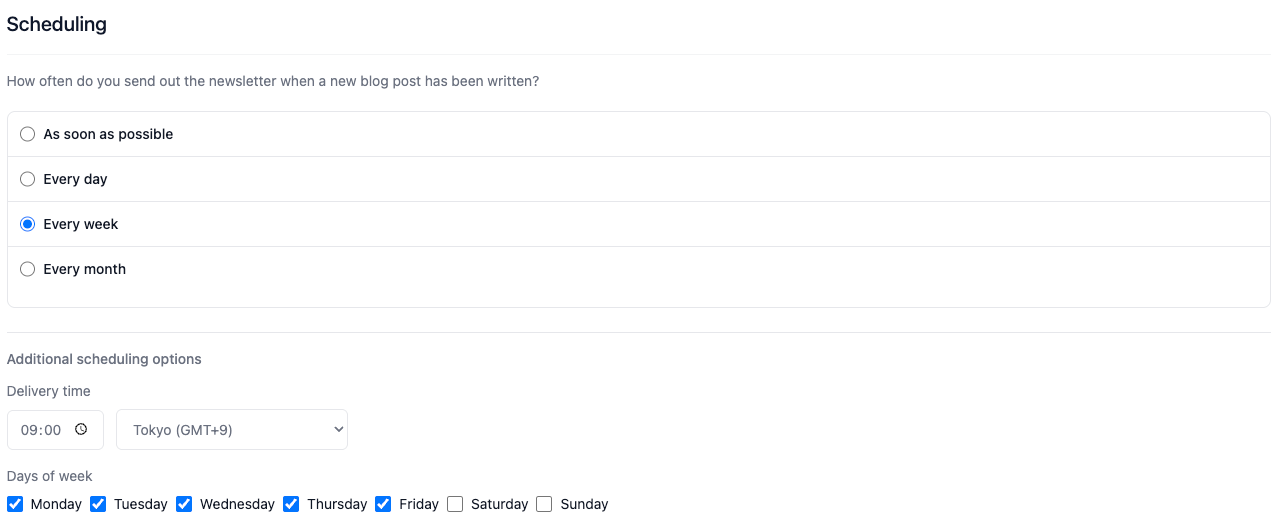Scheduling
Understanding Scheduling Options
When setting up your newsletter campaigns, it's important to understand that emails are only sent when new content is detected in your RSS feed. Our service is specifically designed to convert RSS content to email newsletters.

Basic Scheduling
- As soon as possible: The newsletter will be sent shortly after new content is detected in your RSS feed. This is ideal for time-sensitive content or when you want readers to know about your posts immediately.
Advanced Scheduling
- Every day: The system will check your feed daily at your specified time and send a newsletter only if new content is found since the last email was sent.
- Every week: The system will check your feed on your chosen day(s) of the week and compile any new content found since the last email into a weekly digest.
- Every month: On your selected day of the month, the system will check for and compile all new content published since the last newsletter was sent.
Customizing Your Delivery Schedule
Delivery Time
Select a specific time for your newsletters to be delivered. Consider your audience's habits:
- Morning (7-9 AM): Catch readers before their workday begins
- Lunch time (12-1 PM): Reach people during their break
- Evening (6-8 PM): Connect when readers might have more leisure time
Choose the time zone that matches your preferred sending schedule. The newsletter system will use this time zone to determine when to check your RSS feed and potentially send emails.
Day Selection
For weekly newsletters, you can select specific days when your feed should be checked:
- Monday: Start the week with any new content
- Mid-week (Tuesday-Thursday): Send a digest during the workweek
- Friday: Provide weekend reading material
Best Practices
- Align with your publishing schedule: Set your newsletter timing to occur after you typically publish new content.
- Maintain consistency: Once you establish a schedule, try to stick with it to build reader expectations.
- Consider frequency vs. content volume: If you publish frequently, a daily schedule might create too many emails. If you publish infrequently, a monthly schedule might delay content delivery too long.
- Remember the RSS dependency: No new content in your RSS feed means no newsletter will be sent, regardless of schedule.
- Use timezone wisely: Set the time zone based on when you want the sending check to occur, keeping in mind your own publishing workflow.
By thoughtfully configuring your newsletter scheduling, you'll deliver your RSS content to readers' inboxes at the optimal time and frequency.
 BlogTally
BlogTally